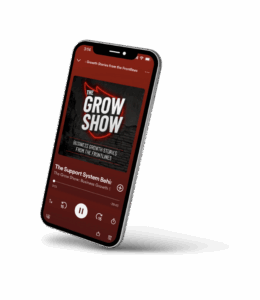Top Outreach Marketing Strategies to Boost Your Brand in 2025

Understanding Outreach Marketing
Outreach marketing is a strategic approach to connecting with a specific target audience through various channels. Rather than waiting for customers to visit you, outreach marketing enables businesses to actively reach out, build relationships, and engage potential customers. This proactive method fosters brand awareness and enhances customer loyalty, which is vital to long-term business success.
In this article, we will explore various aspects of outreach marketing, delve into future-proof strategies, and highlight how social media, content marketing, and email marketing can significantly enhance your brand’s visibility and engagement.
The Importance of Outreach Marketing
In today’s saturated market, simply having a great product or service isn’t enough. Outreach marketing helps to bridge the gap between your brand and your audience, making it an essential strategy for growth. By engaging directly with potential customers, brands can:
- Establish authority and trust in their industry.
- Enhance brand visibility through authentic interactions.
- Generate leads and drive conversions more efficiently.
Furthermore, outreach marketing aids in gathering valuable feedback from customers, allowing brands to refine their offerings continuously. As we move into 2025, the importance of outreach marketing will only grow, making it a priority for businesses across all sectors. The rise of digital platforms has made it easier than ever for brands to connect with their audience, but it also means that competition is fiercer. Companies that leverage outreach marketing effectively can differentiate themselves and create meaningful connections that lead to lasting customer relationships.
Key Components of Effective Outreach Marketing
For outreach marketing to yield fruitful results, specific key components must be in place. Additionally, storytelling plays a pivotal role in outreach marketing. By sharing compelling narratives that resonate with your audience, brands can create emotional connections that transcend traditional marketing tactics. This approach captivates potential customers and encourages them to share their experiences with others, organically amplifying your outreach efforts. Moreover, incorporating user-generated content into your strategy can enhance authenticity, as real customers sharing their stories can significantly bolster your brand’s credibility and appeal.
Another vital aspect of outreach marketing is the cultivation of partnerships and collaborations. By aligning with influencers, complementary brands, or community organizations, businesses can tap into new audiences and leverage the trust these partners have built. Such collaborations can take many forms, from co-hosting events to joint marketing campaigns, and can lead to increased visibility and engagement for all parties involved. As outreach marketing continues to evolve, embracing these collaborative strategies will be key to staying ahead in an ever-changing landscape.
Target Audience Identification: Understanding your audience and what they need is crucial. Tailoring your outreach efforts to specific demographics improves relevance and engagement.
Value Proposition: Communicating what makes your brand unique and beneficial to potential customers is essential for grabbing their attention.
Channel Selection: Choosing the right platforms for outreach—whether social media, email, or other methods—can significantly affect your campaign's success.
Measurement and Adjustment: Continuously monitoring the effectiveness of your outreach efforts and being willing to adapt strategies as needed helps maintain momentum and drive continuous improvement.
Additionally, storytelling plays a pivotal role in outreach marketing. By sharing compelling narratives that resonate with your audience, brands can create emotional connections that transcend traditional marketing tactics. This approach captivates potential customers and encourages them to share their experiences with others, organically amplifying your outreach efforts. Moreover, incorporating user-generated content into your strategy can enhance authenticity, as real customers sharing their stories can significantly bolster your brand’s credibility and appeal.
Another vital aspect of outreach marketing is the cultivation of partnerships and collaborations. By aligning with influencers, complementary brands, or community organizations, businesses can tap into new audiences and leverage the trust these partners have built. Such collaborations can take many forms, from co-hosting events to joint marketing campaigns, and can lead to increased visibility and engagement for all parties involved. As outreach marketing continues to evolve, embracing these collaborative strategies will be key to staying ahead in an ever-changing landscape.
Future-Proof Marketing Strategies for 2025
As we look ahead, businesses must adapt their marketing strategies to meet the evolving marketplace demands. By considering innovative and sustainable approaches, brands can effectively navigate the complexities of 2025.
Embracing Technological Innovations
Incorporating advanced technologies is a game-changer for outreach marketing. This includes integrating artificial intelligence and machine learning to automate processes, analyze consumer behavior, and personalize communication. Businesses can optimize their outreach efforts by utilizing chatbots, predictive analytics, and sophisticated CRM systems, ensuring no opportunity goes unnoticed.
Moreover, staying ahead in technology means adopting new platforms and tools for outreach. Virtual reality experiences, for example, allow brands to engage audiences in immersive ways that traditional marketing methods cannot. Adapting to these innovations will attract tech-savvy consumers and strengthen brand positioning as an industry leader. Additionally, augmented reality (AR) can enhance product demonstrations, enabling customers to visualize how products fit into their lives before purchasing. This level of interactivity can significantly boost conversion rates and foster a deeper connection between the consumer and the brand.
Incorporating Sustainability in Marketing
The push for sustainability is more prominent than ever, and customers are increasingly leaning toward brands that prioritize environmentally friendly practices. Consider highlighting your brand’s commitment to sustainability in your outreach marketing strategies.
Utilize eco-friendly packaging, promote responsible sourcing, and communicate your business’s steps to reduce its carbon footprint. By aligning outreach marketing with sustainable practices, brands can connect with socially conscious consumers and demonstrate their commitment to a more significant cause. Furthermore, storytelling can play a vital role in this approach; sharing how your products are made, the communities involved, and the positive environmental impact can create a compelling narrative that resonates with consumers. This enhances brand loyalty and encourages customers to advocate for your mission, amplifying your outreach through word-of-mouth and social sharing.
Social Media as a Powerful Outreach Tool
In an age where social media is crucial to brand engagement, businesses can no longer afford to sideline these platforms in their outreach marketing. With billions of users worldwide, social media offers opportunities to connect with potential customers and gather insights. The dynamic nature of these platforms allows brands to engage in real-time conversations, respond to customer inquiries, and even manage crises effectively, showcasing their commitment to customer service.
Related Content: Role of Social Media in Lead Generation
Utilizing Social Media Advertising
Paid advertising on social media platforms allows for precise targeting and reaching a broad audience quickly. By creating engaging ad content and utilizing various ad formats—such as stories, carousel ads, or videos—brands can capture users’ attention effectively. The interactive nature of these formats encourages users to engage with the content, whether through likes, shares, or comments, thereby increasing the organic reach of the brand’s message.
Moreover, social media advertising enables businesses to retarget users who have previously interacted with their content, keeping the brand top-of-mind and driving conversions more efficiently. This strategy maximizes the return on investment and allows brands to analyze user behavior and preferences, refining their marketing strategies in real time for better results. Additionally, leveraging analytics tools available on these platforms can help brands understand which ads resonate most with their audience, enabling continuous improvement and optimization of their outreach efforts.
Leveraging Influencer Marketing
Influencer marketing has rapidly become one of the most effective tools for outreach. By partnering with influencers who resonate with their target audience, brands can tap into established trust and credibility. Choosing the right influencers—those who share your brand’s values and can authentically promote your products—will enhance your outreach efforts substantially. This approach amplifies brand visibility and fosters a sense of community among followers, who often view influencers as friends or mentors.
As brands strive to stand out in a crowded market, collaborating with micro-influencers can yield high engagement rates, often leading to a more authentic connection with potential customers. These influencers, typically boasting smaller but highly engaged followings, can create tailored content that speaks directly to niche audiences, making it easier for brands to penetrate specific markets and foster loyalty.
Content Marketing for Brand Visibility
Quality content is at the heart of successful outreach marketing. Content marketing enhances visibility and establishes your brand as an authority in your field. By focusing on creating value through content, you foster deeper connections with your audience. As consumers increasingly seek authenticity and transparency, brands prioritizing genuine engagement through quality content are likelier to cultivate loyalty and trust among their followers.

Creating Engaging Content
Your content must resonate with your audience and align with their interests and needs. This involves utilizing various formats—such as blog posts, videos, infographics, and podcasts—to cater to different preferences. Each format offers unique advantages; for instance, videos can convey complex ideas quickly and memorably, while infographics can simplify data-heavy information into digestible visuals. By diversifying your content strategy, you can reach a broader audience and keep your existing followers engaged.
Additionally, storytelling is a powerful tool in content marketing. Sharing your brand’s story, customer success stories, or behind-the-scenes looks can make your content more relatable and drive emotional connections. Incorporating narrative elements can transform a simple promotional piece into an engaging tale that captivates your audience. This approach humanizes your brand and encourages sharing, thereby amplifying your reach organically.
SEO and Content Marketing
Integrating SEO strategies with content marketing is crucial for improving your brand’s visibility online. By using keyword research, optimizing your content for search engines, and ensuring your website’s technical configurations are up-to-date, you can attract organic traffic to your brand. Regularly updating your content and optimizing older posts can keep your website relevant in search engine rankings, ensuring your brand remains visible in an ever-evolving digital landscape.
Moreover, employing backlinks from authoritative sites further enhances your brand’s credibility. When reputable websites link to your content, it drives traffic and signals to search engines that your content is valuable and trustworthy. Investing in SEO alongside your outreach marketing efforts secures a broader reach and solidifies your brand as a trusted source of information. Additionally, analyzing your SEO performance through tools like Google Analytics can provide insights into what content resonates most with your audience, allowing you to refine your strategy for an even more significant impact.
Read More: Building an Effective SEO Content Marketing Strategy
Email Marketing in the Digital Age
While the digital landscape is ever-evolving, email marketing continues to be a powerful outreach tool. It offers businesses direct communication with their audience, enabling personalized and targeted messaging that can drive significant engagement. With an estimated 4 billion email users worldwide, the potential reach of email marketing is vast, making it an indispensable component of any digital marketing strategy.

Crafting Effective Email Campaigns
The magic of email marketing lies in its personalization capabilities. Crafting emails that speak directly to individual recipients based on their preferences and behaviors results in higher open and conversion rates. Consider segmenting your email list to tailor your messages to specific demographics, previous purchase behavior, or engagement levels. For instance, a clothing retailer might send different promotions to customers who frequently purchase activewear than those who prefer formal attire, ensuring each recipient receives content that resonates with their interests.
Additionally, pay attention to aesthetics and content quality. An eye-catching design, clear call-to-action, and compelling subject lines are essential to effective email campaigns. Your emails should not only inform but also inspire action. Incorporating visuals, such as high-quality images or videos, can enhance the appeal of your emails, making them more engaging and shareable. Furthermore, A/B testing different elements of your emails, from subject lines to layout, can provide valuable insights into what resonates best with your audience.
Personalization and Segmentation in Email Marketing
Personalization and segmentation are paramount in effective email marketing. By leveraging data analytics, you can gain insights into customer behaviors and tailor your messages accordingly. This targeted approach ensures that your emails are relevant to the recipient. For example, dynamic content that changes based on the recipient’s past interactions with your brand can create a more engaging experience, making them feel valued and understood.
Segmentation can be based on various factors, including previous interactions, location, or customer lifecycle stage. Personalizing the content and timing of your emails can significantly improve engagement, leading to higher conversion rates and customer loyalty. For instance, sending a birthday discount to customers on their special day can foster a sense of connection and appreciation, encouraging them to purchase. Additionally, analyzing engagement patterns can help determine the optimal times to send emails, ensuring they land in inboxes when recipients are most likely to read them.
Key Takeaways
As we look toward the future of email marketing, the integration of artificial intelligence and machine learning is set to revolutionize how businesses connect with their audiences. These technologies can analyze vast amounts of data to predict customer behavior, automate personalization, and optimize sending times, making email campaigns even more effective. Moreover, the rise of interactive email elements, such as polls and quizzes, transforms static messages into dynamic experiences that invite recipients to engage in new ways. This evolution enhances user experience and helps brands gather valuable feedback and insights directly from their audience.



